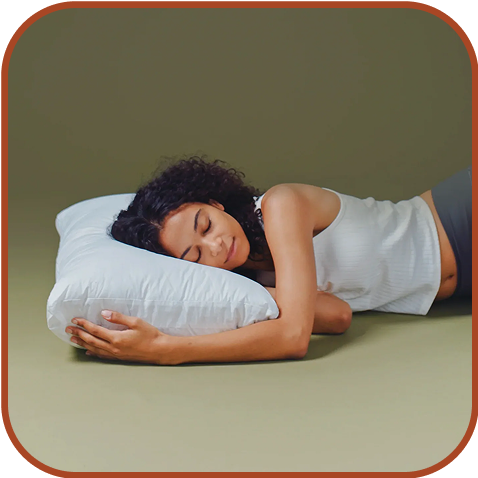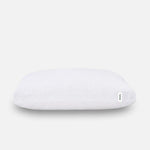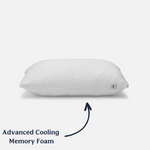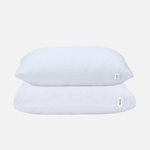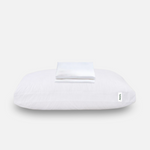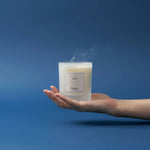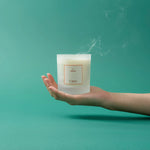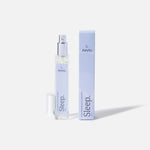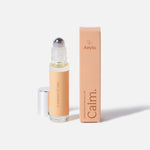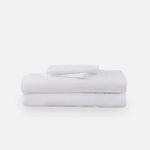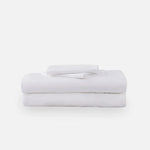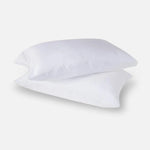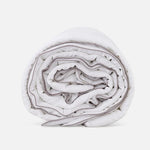If you’ve been reading about weighted blankets, you know they have helped thousands of people get the good night’s sleep they have longed for.
They are used as therapy blankets for people with a variety of nervous system disorders (depression, anxiety), pain conditions (like arthritis) or sensory processing disorders like autism spectrum disorder (the blankets help to ease their anxiety).
Indeed, anyone who has trouble sleeping may find that a weighted blanket provides the soothing touch that they need to settle into a good night’s sleep.
Studies suggest that the physical connection created by a weighted blanket has an abundance of positive effects on specific hormones and neurotransmitters. These govern the nervous system, so the result is reduced anxiety and improved mood and stress levels.
This soothing effect has been attributed to the deep pressure from the weighted blanket which helps to calm the nervous system, so the anxious, stressed or hyperactive person can get the restorative sleep they need.
Weighted blankets come in different sizes, materials, and fabrics, and are all suited to different requirements. With so much choice out there, it can be overwhelming. You don’t want to fork out cash on one that isn’t right for you. So, how to pick a weighted blanket to suit your needs? Keep reading to find out.
Why it’s important to choose the right weighted blanket

You may be wondering how to buy a weighted blanket -- what factors to look for so you get what you need.
You may have received a blanket recommendation from a friend or family member, or an article you read. But the truth is, there are differences among those available.
Or, some crafting gurus have even advised sewing up your own. Unless you’re a professional seamstress -- with the patience to deal with thousands of tiny glass or plastic pellets -- this idea is likely unwise.
Nah, you want a pretty (or handsome) weighted blanket that looks nice in your bedroom (or den). You want it to hold up in case of washing if necessary. You want to derive the best “sleep effects” - the most important aspect. And you want to enjoy it for many years -- not fall apart with the first washing!
Here’s a quick guide to help you purchase one that is perfect for your own needs.
There are lots to think about in making your purchase -- including the type of fabric, size, and weight. Yes, they do vary by weight to match your body weight.
Here’s your checklist to consider:
- Is the size good for you / your bed size?
- What kind of materials is inside and outside?
- Are the materials non-toxic?
- Is the weighted section well-constructed?
- Can you wash it at home, including the weighted section?
- Is there a warranty?
The prices of weighted blankets can range from $30 to $300. This includes amateur-made ones on crafting sites, blankets specifically for children and adults, and well-manufactured premium weighted blankets. There are many variations of weighted blankets, and no matter which one you choose, we encourage you to read our article on what are the benefits of a weighted blanket.
Blanket size recommendations

“What size weighted blanket should I get?” We hear you say. Well, generally speaking, a twin-size weighted blanket suits the average adult. For best results, your entire body should be covered from the neck down. A weighted blanket is ideally based on the person’s size, not the bed size they prefer. If your blanket is too big and hangs over the sides of your bed, it is likely to slide off while you’re asleep.
Young children will need a much smaller and lighter blanket, as they won’t have the strength to remove a big, heavy one. This can be dangerous for obvious reasons. The same also applies to elderly frail people.
How heavy should my weighted blanket be?
As mentioned before, an adult will have a heavier weighted blanket than a child will. For adults, the best weight for a weighted blanket ranges between 12 or 30 LBs. Children's versions should range from 2LB to 10LB.
Although some brands recommend a 1 year minimum age, our medical advisors have said that weighted blankets should never be used on children under the age of 2 due to SIDs (sudden infant death syndrome).
To get the greatest benefit from deep touch pressure, the standard medical advice is to base it on 10 percent of the user’s body weight -- then add a few pounds.
A Recommended Weight Chart will typically help with the selection. Generally, the charts indicate a size between 7-12% of your body weight. Of course, your choice will be based on personal preference. You may love a heavier feeling but another person might like a gentler weight.
Identifying a high-quality weighted blanket
How to pick a weighted blanket? The details make the difference, as always. After all, this is an item you will be snuggling with for years to come. You want one that looks good in your bedroom and feels good next to your skin. And for heaven’s sake, you want one that keeps you sleeping soundly for many years!
Seems like a simple request, doesn’t it? But with many available (including homemade versions), there are a few facts that will help you make your selection.
Examining a weighted blanket

They are heavier than the usual comforter or down quilt. The weighted inner section can be constructed in 3 different ways. Each of these methods affects the weight distribution and durability of the blanket. Here’s an article that describes these 3 methods: How are weighted blankets made?
Unless you have even weight distribution, you won’t get the deep pressure benefit from your weighted blanket. That’s why the Advanced Blending Process is best.
Advanced Blending Process
If you’re wondering, “what weighted blanket should I get?” We recommend choosing one that involves an advanced blending process. You will find this in the more expensive models as it takes longer to complete in the factory so there is an extra cost. In this process, the weighted pellets (usually tiny glass pellets) are blended with the padding material.
To keep the weight evenly distributed across the blanket, the pellets are sewn into pockets. A filler may be added to prevent shifting of the material and to add softness. Standard polyester, eco-friendly recycled polyester, and cotton may be used as the filler. However, polyester is most commonly used as cotton doesn’t work well in keeping the weighted material in place.
This advanced process helps ensure the blanket’s form and function are stable for a long time.
Do you need to buy a cover for a weighted blanket?
The highest quality versions will typically include an outer cover. You may have the option to purchase without the cover. Or you may be able to buy additional covers so you have variety in your new bedding.
Positives to consider: The material used in the outer cover is a very important aspect of your purchase. After all, you want one that is attractive in your bedroom (or family room). You want a soft material that feels nice against your skin. You want a fabric that is machine washable.
Negatives to consider: You don’t want a blanket that falls apart with one or two washings. You don’t want a heavy fabric that adds more weight -- and perhaps increases your body heat at night.
What’s best for you?

This depends on whether you like to be wrapped in super-soft material at night like Minky brushed polyester or you would prefer a more natural fabric like cotton or bamboo.
Cotton & bamboo are both more breathable so should help you regulate heat a bit better than a polyester cover -- although they won’t last as long especially bamboo.
Bamboo is being transformed into a very soft, lightweight, eco-friendly fabric. If you like making “green” purchases, you will appreciate this option.
Is it difficult to take care of a weighted blanket?
Your new blanket will require a little bit of care, just as any comforter or blanket. The weighted section is the most complex so it deserves more protection.
Here’s the best advice: Always keep a cover on your blanket so you won’t need to wash the weighted section. However, it’s smart to look for “machine washable” covers AND inner sections. You’ll be fine, then, in case there’s a stain on the weighted section.
For detailed instructions on washing a weighted blanket, check this blog post on how to wash a weighted blanket.
Finding the perfect weighted blanket
If you’re looking for something that’s high quality yet affordable, it’s best to find a company that:
- Specializes in professionally manufactured blankets
- Uses high-quality non-toxic and hypoallergenic materials for optimal safety.
Your checklist in making your purchase:
- Is the size good for you / your bed size?
- Is the blanket well-constructed?
- Are the weights well-distributed?
- Are the weighted materials non-toxic and non-perishable?
- Can you wash the blanket at home, including the weighted section?
- Is there a warranty?
As with many purchases, a quality product is often more expensive. That reflects the materials and the construction process involved in manufacturing -- critical in this case because of the weighted section.
You want the best quality for your money!
